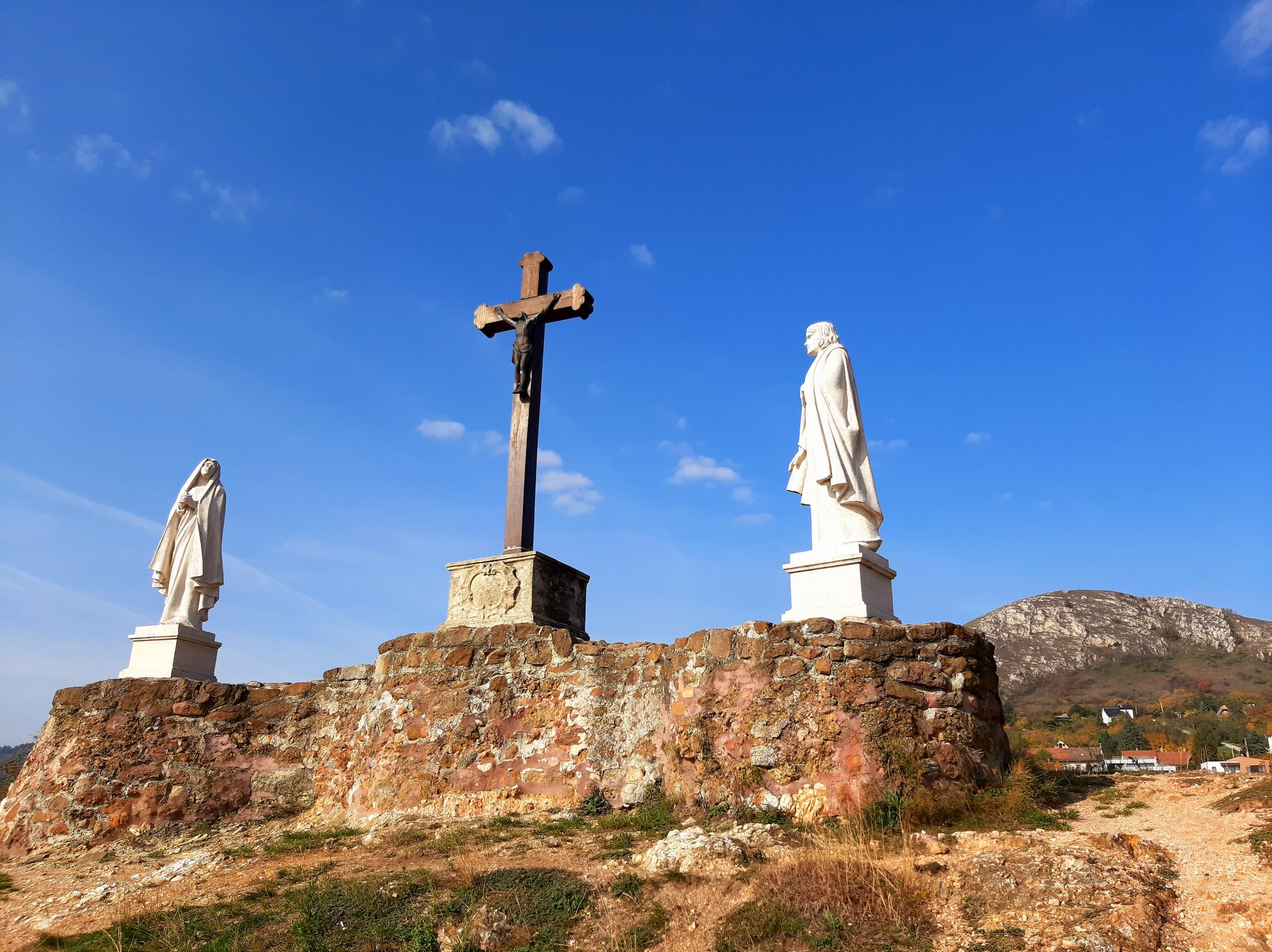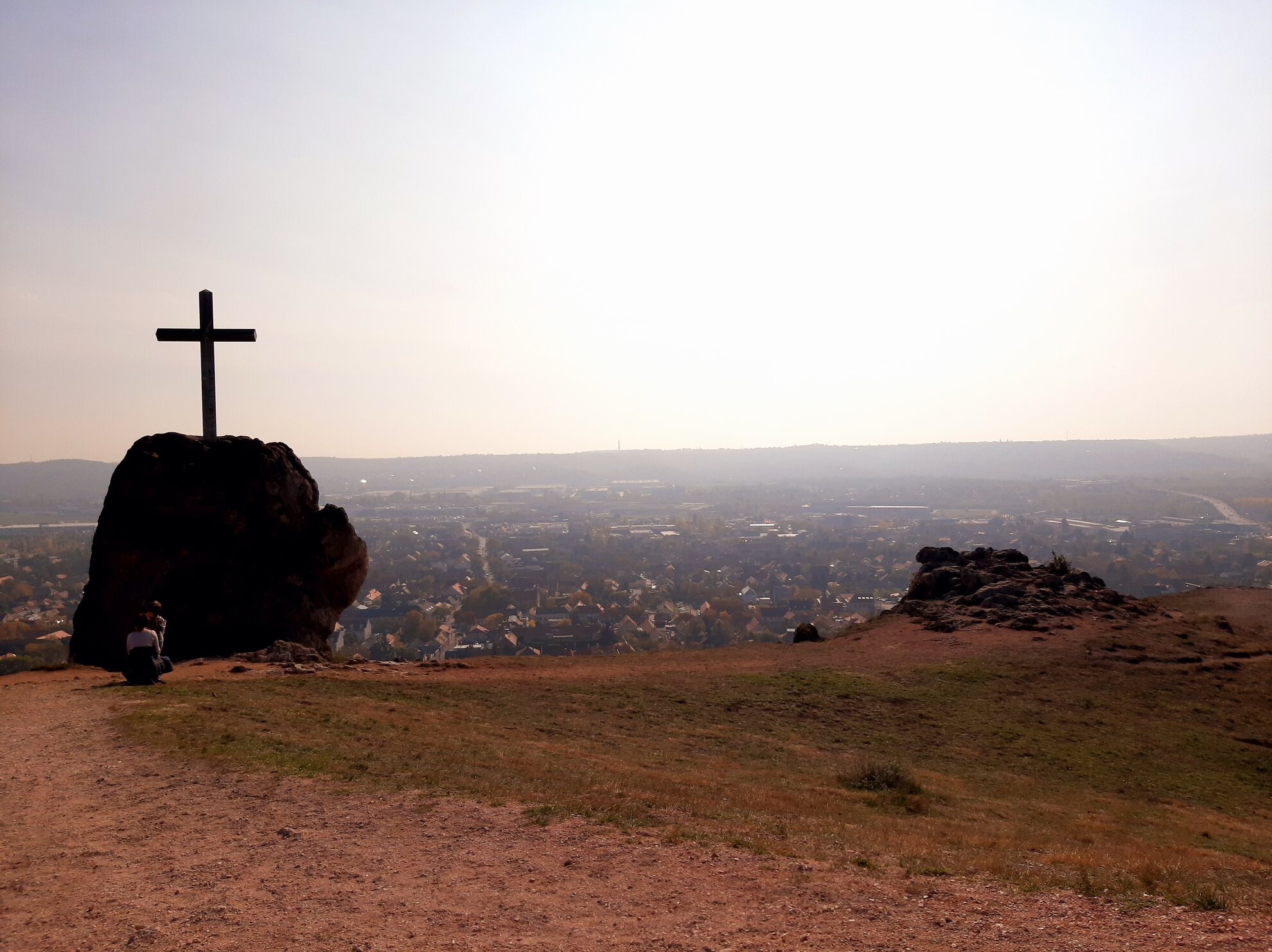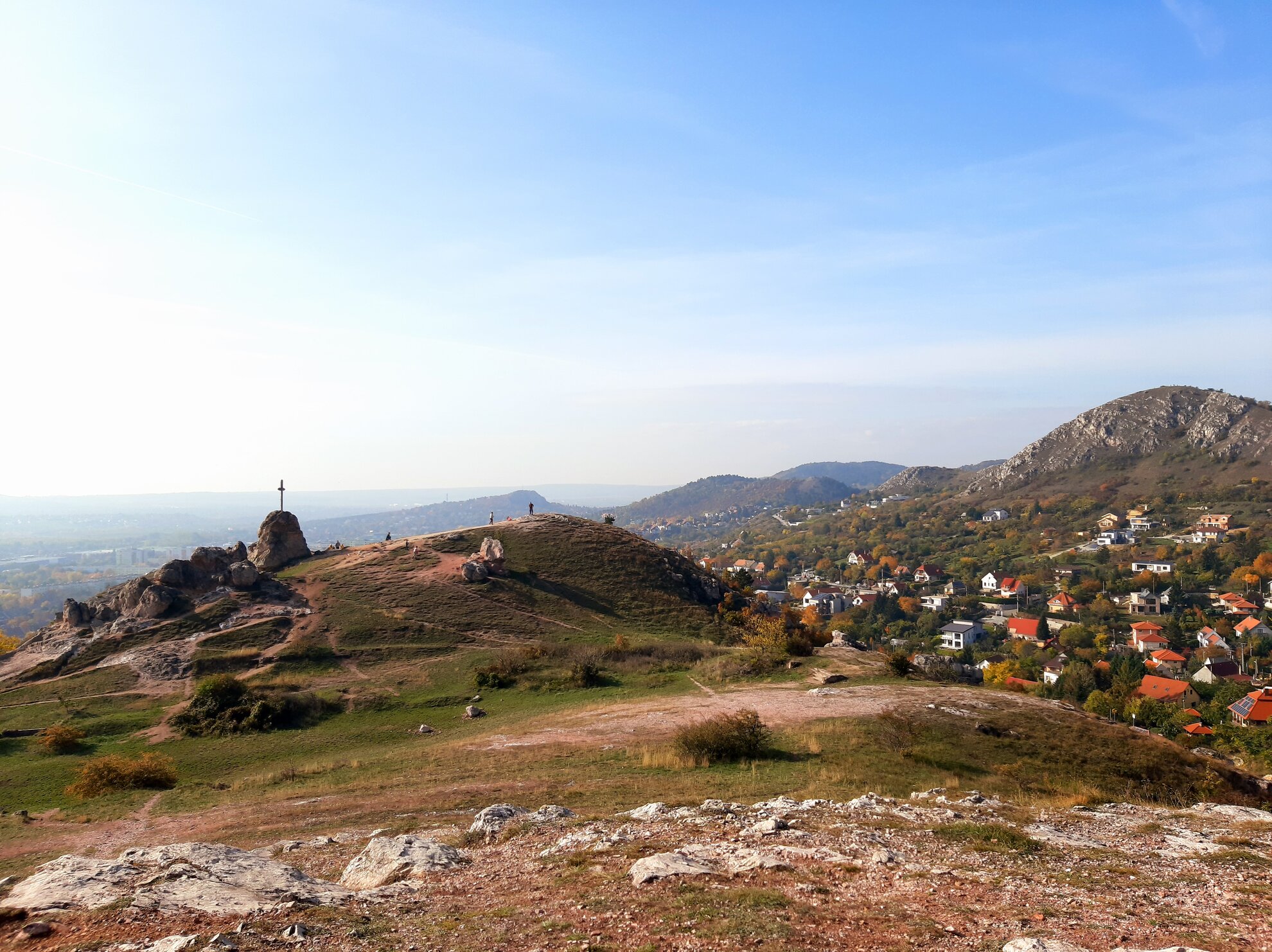You can start from the Csillebérc terminus of bus 21, but take the
direction of Farkas- and Szekrényes-hegy, a path marked with a red cross and just
plain signs. After half an hour of hiking amid the fallen acorns in the musty
oak woods, you see Kő-hegy (‘Stone Hill’) ahead.
Walking between holiday homes
and wine-press houses, you arrive at the edge of the old village of Budaörs.

From the bottom of Kálvária-domb, ‘Calvary Hill’ 173 metres high,
you can easily walk up the twisting path to the stone
cross, with limestone statues of the Virgin Mary and John the Baptist on either
side looking into the distance.
Like the chapel below, the stations were
originally built in 1817, and rebuilt in 2002 after their destruction in World
War II.

The regular cone shape of the hill was formed by a geyser once located here. The panorama is already promising – you can see Kő-hegy rising next door, like a huge stone wall.

Kő-hegy should only be climbed on designated routes, the only way to avoid the dauntingly steep slope. Sturdy steps lead up from Kőszikla utca. Kő-hegy is also a religious monument: the original Chapel of the Immaculate Conception was built in 1855 by Ferenc Wendler in gratitude for those who survived a local mining disaster, after the Virgin Mary appeared to the architect in a dream.

Word soon spread about the chapel and the story behind it – Pope Pius XI sent a statue of the Virgin Mary from Rome. Crowds made pilgrimages here, and Wendler even moved into the adjacent cave to live as a hermit.

The chapel was also destroyed in the war and rebuilt from donations in 2003. Alongside stands the renovated statue of Mary. At the top, a four-and-a-half-meter-high metal cross, in place since 1995, is usually illuminated by spotlights in the evening. The original was removed as part of a collection for scrap iron in the early 1950s.

The dolomite caves of Kő-hegy, sealed off by railings, were formed by the former heat springs here. All around, in fact, due to the more spectacular work of the wind, rain and ice, the rock formations, protrusions and points, provide lookout points for visitors to find a spot and break open the picnic basket. This, quite simply, is one of the best places to hike around Budapest.

As you gaze out, to the north rise the Csíki hills and the heights of Budaörsi-kopárok, the closest being Odvas-hegy, which you can also scale if you have time. Below stretches the charming old town of Budaörs, with its tangled roofs and Swabian wine-press houses.
Beyond, Budapest emerges on the blue horizon. Perhaps everything seems so exceptional here as, unlike other hiking destinations, Kő-hegy is not surrounded by forest. Sights unfold directly before you at this dizzying vantage point.

It’s also worth investigating the twisty-turny streets that snake around the bottom of Kő-hegy and Kálvária-domb, their Swabian heritage interesting from the point of view of urban history.

Budaörs can be reached by several buses from Budapest, such as the 40 and 88A from the back of Kelenföld station. Those with regular transport passes will need a supplementary ticket to go beyond the city limits.




